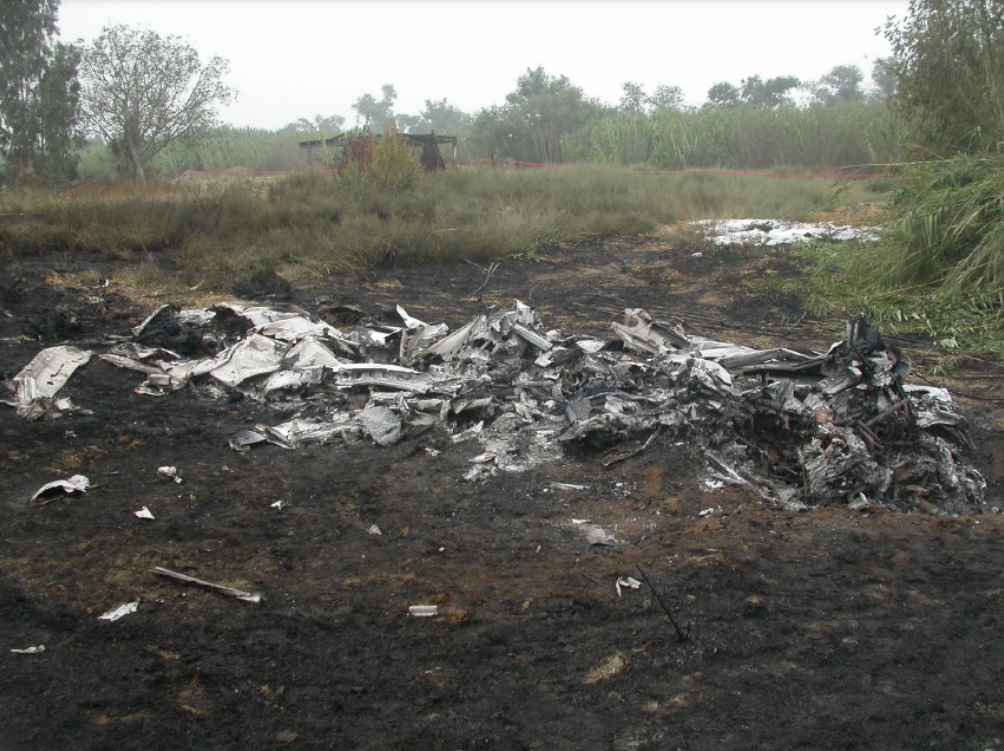
ASN Wikibase Occurrence # 295154
This information is added by users of ASN. Neither ASN nor the Flight Safety Foundation are responsible for the completeness or correctness of this information.
If you feel this information is incomplete or incorrect, you can submit corrected information.
| Date: | Wednesday 1 October 2003 |
| Time: | 14:41 |
| Type: |  Piper PA-32R-301T Saratoga II TC |
| Owner/operator: | Private |
| Registration: | N481CA |
| MSN: | 3257081 |
| Year of manufacture: | 1999 |
| Total airframe hrs: | 772 hours |
| Engine model: | Textron Lycoming TIO-540-AH1A |
| Fatalities: | Fatalities: 2 / Occupants: 2 |
| Aircraft damage: | Destroyed |
| Category: | Accident |
| Location: | Corona, CA -
 United States of America United States of America
|
| Phase: | Initial climb |
| Nature: | Private |
| Departure airport: | Corona Municipal Airport, CA (KAJO) |
| Oakland International Airport, CA (OAK/KOAK) | |
| Investigating agency: | NTSB |
| Confidence Rating: |
On October 1, 2003, about 1541 Pacific daylight time, a Piper PA-32R-301T, N481CA, declared an in-flight fire emergency, and crashed shortly after takeoff in an unincorporated area of Corona, California. The pilot operated the airplane under the provisions of 14 CFR Part 91. The private pilot and a passenger were fatally injured. The airplane was destroyed in the post-impact fire. The cross-country flight departed the Corona Municipal Airport (AJO) about 1537, en route to Oakland, California. Visual meteorological conditions prevailed and an instrument flight rules (IFR) flight plan had been filed. The primary wreckage was located at 33 degrees 56.46 minutes north latitude and 117 degrees 34.41 minutes west longitude.
Shortly after takeoff the pilot contacted air traffic controllers and declared an emergency due to an in-flight fire. An airborne witness in another aircraft reported seeing the accident airplane in level flight with black smoke emanating from it. The airborne witness then reported seeing the airplane bank to the left and enter a nose down spiral towards the ground. The airplane impacted flat level terrain in a steep nose down attitude and the post-impact fire consumed the majority of the airplane. The flight was airborne for about 4 minutes before it crashed. The on-scene and detailed post recovery examinations revealed evidence consistent with an in-flight fire in the lower aft engine compartment area in proximity to the turbocharger and the adjacent firewall. Evidence on the nose landing gear strut cylinder suggests that temperatures in this area exceeded the melting point of aluminum while the airplane was in flight. During the engine examination investigators noted that the tension ring of the turbocharger exhaust clamp that retains the exhaust duct to the turbine side of the turbocharger had fractured at the 11 o'clock position. The exhaust clamp bolt remained connected and properly safetied. With this clamp broken and the exhaust ducting loose, hot exhaust gasses would have been directed against the lower firewall. The examination of the turbocharger exhaust clamp showed a high temperature creep/stress rupture that initiated from a crack at one of the resistance welds that joins the sheet metal retainers to the tension ring. The turbocharger gases are approximately 1,200 to 1,500 degrees Fahrenheit, and the tension ring fracture surface showed intergranular brittle fracture across approximately 80-percent of the cross-sectional area initiating at the resistance weld. The heavily oxidized resistance weld region, when compared to the lighter oxidized sheet metal, suggested that the weld crack was pre-existing. A review of past historical Safety Board data revealed three other accidents, FTW98FA325, FTW99LA241, and CHI02FA042, with similar fractures of exhaust clamps, and other referenced data showed that Inconel 718 could crack in an intergranular mode in a time-dependent creep/stress rupture mode in this temperature range. Cockpit/cabin material that showed exposure to fire was found in the wreckage debris field away from any areas affected by the ground fire.
Probable Cause: The failure of the turbocharger exhaust clamp due to a pre-existing weld crack, which allowed the release of high temperature exhaust gasses in the engine compartment, causing an in-flight fire.
Accident investigation:
 |
|
Sources:
NTSB LAX04FA001
Images:

Photo: NTSB
Revision history:
| Date/time | Contributor | Updates |
|---|---|---|
| 12-Oct-2022 18:37 | ASN Update Bot | Added |
Corrections or additions? ... Edit this accident description
The Aviation Safety Network is an exclusive service provided by:


 ©2024 Flight Safety Foundation
©2024 Flight Safety Foundation